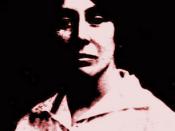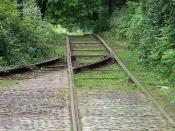It is easy to caricature the late nineteenth century as a time of corruption, scandal-plagued politics, conspicuous consumption, and unfettered capitalism. But it is more useful to think of this period as the birth of some of America's most influential writers, activists, and journalists. Mary Heaton was all of those things. She was born in New York City on October 11th, 1874. She grew up during the Gilded Age and did a large portion of her work during the Roaring 20s, or the Jazz Age. Her parents traveled a lot and Mary learned to speak French, Italian, and German fluently. Later, despite her mother's wishes she left her home in Massachusetts and came to Greenwich Village in NYC and became a writer in the 1980's.
Heaton had two tragic marriages and an even worse love affair. She had two children to which she considered she failed as a mother to.
Mary Heaton cured her self from severe alcoholism, and a drug addiction to morphine. Yet, she was able to stay very active in the labor movement and a strong supporter of women's suffrage. Heaton wrote over 400 stories and articles for popular American journals such as New Yorker, Harper's Weekly, McClure's Magazine and New Republic; and wrote 18 books including Stories of a Very Little Person (1910), Men and Steel (1921), A Footnote to Folly (1935) and Labor's New Millions (1938). She took part in history making labor strikes and recorded violence of strike breaking methods. She reported from Moscow in 1917 during the outbreak of the Russian Revolution. As the New Deal began in the United States, Heaton was in Germany reporting about Hitler gaining power in 1933. Even at the age of 78, no one could hold her back as she went to report at a mob controlled...


